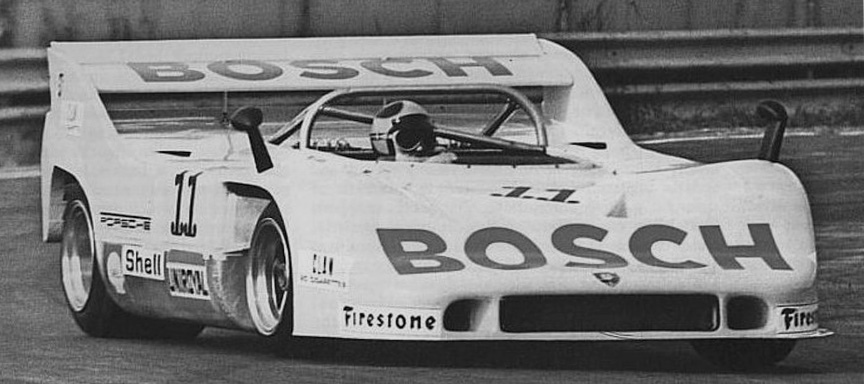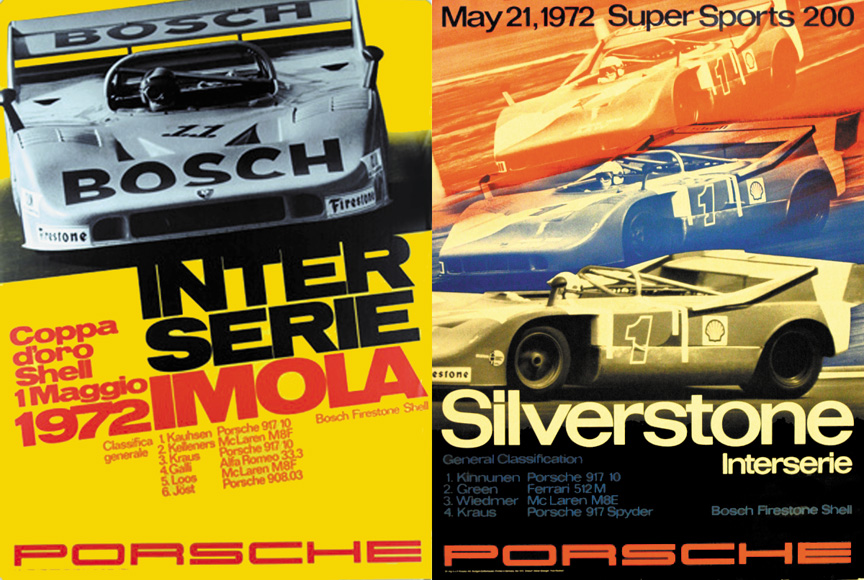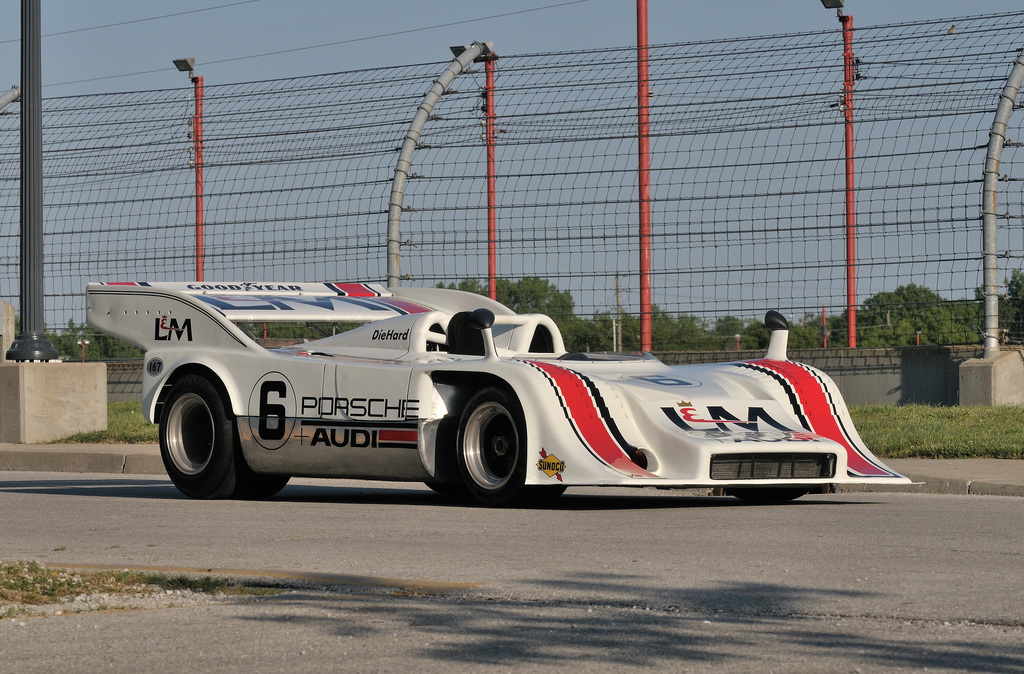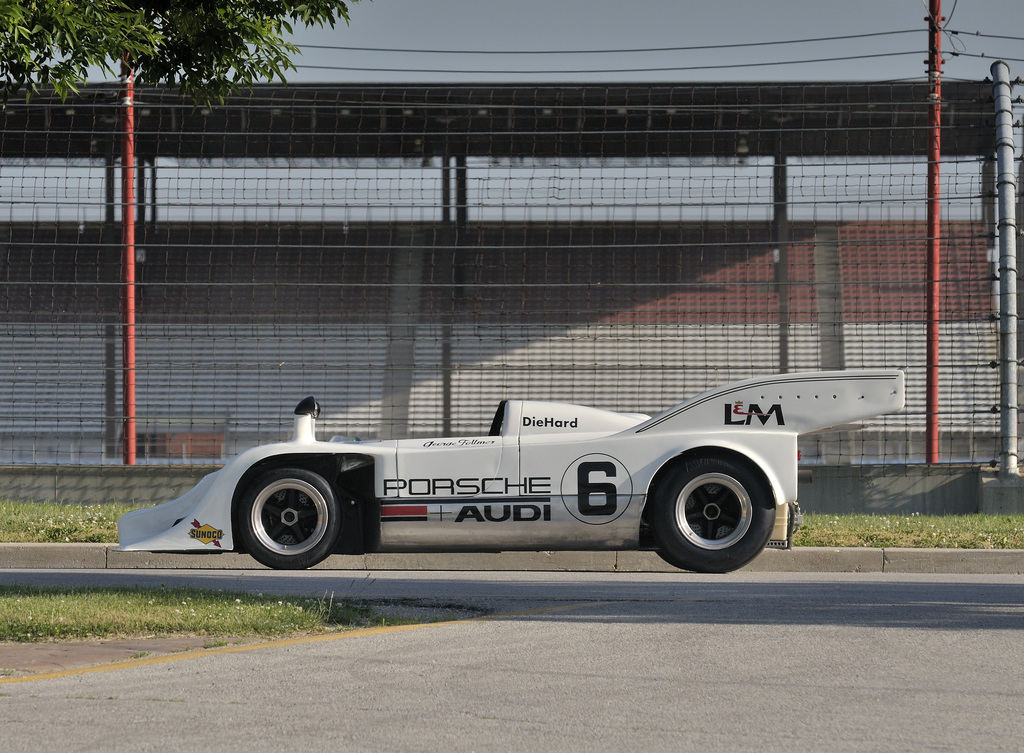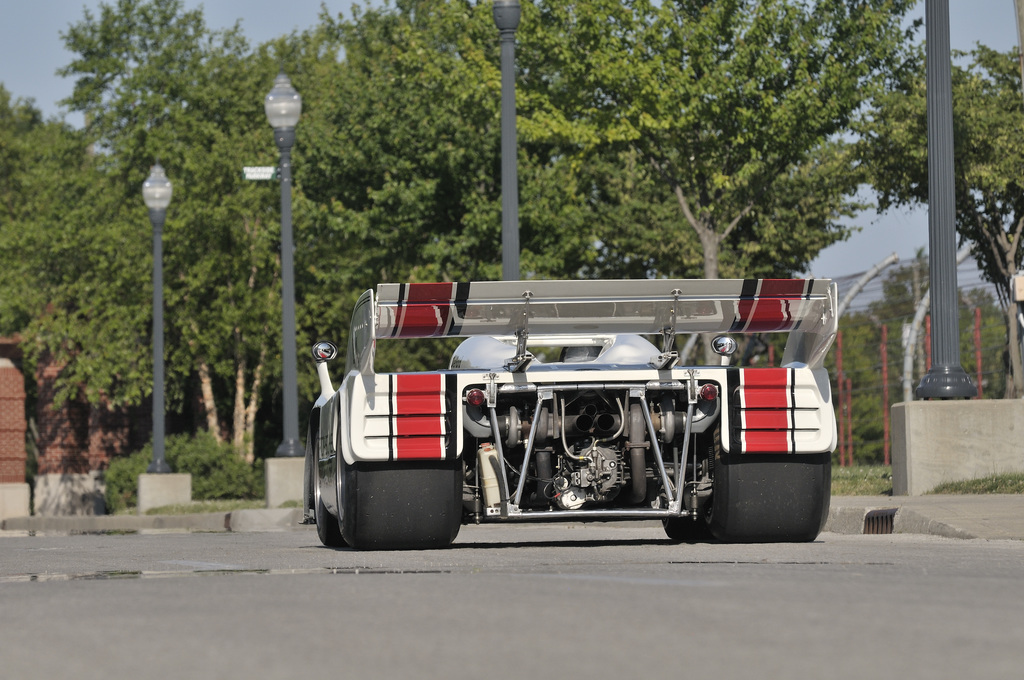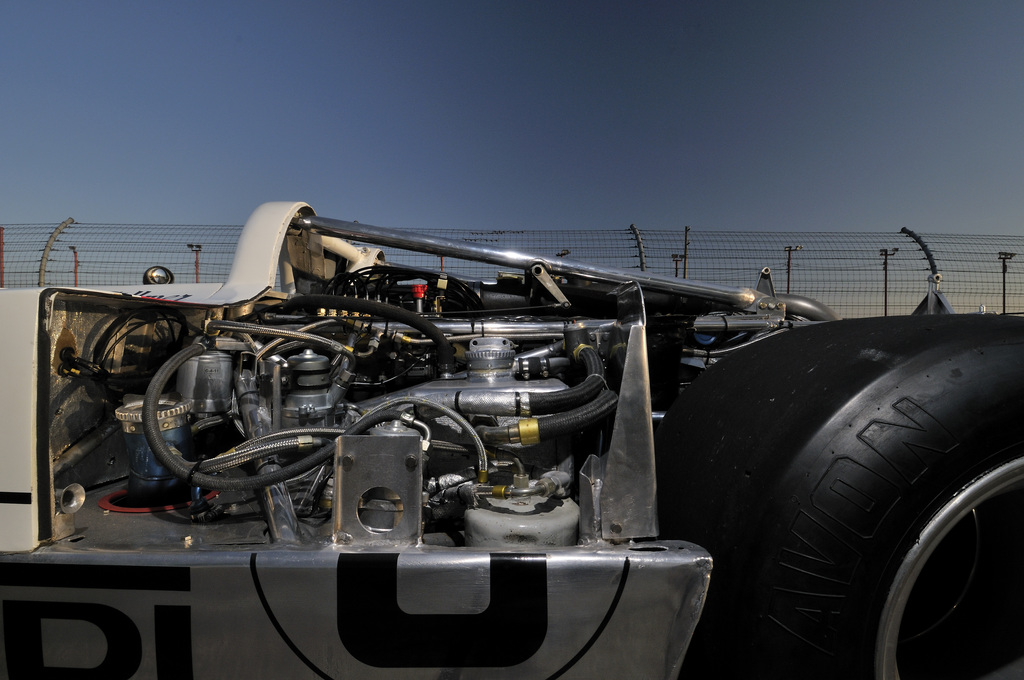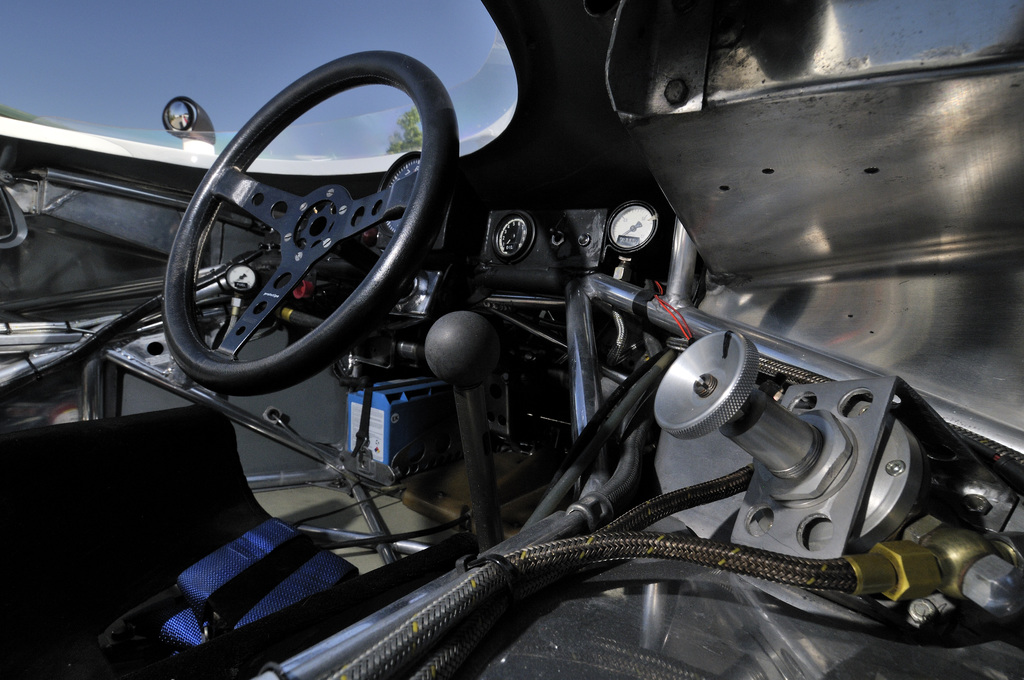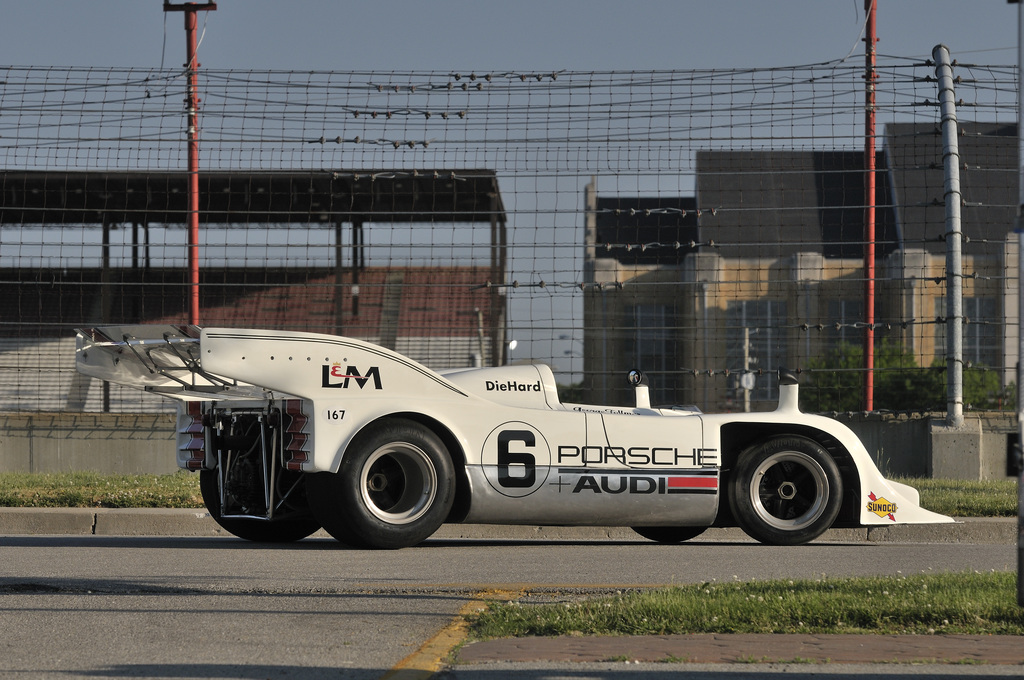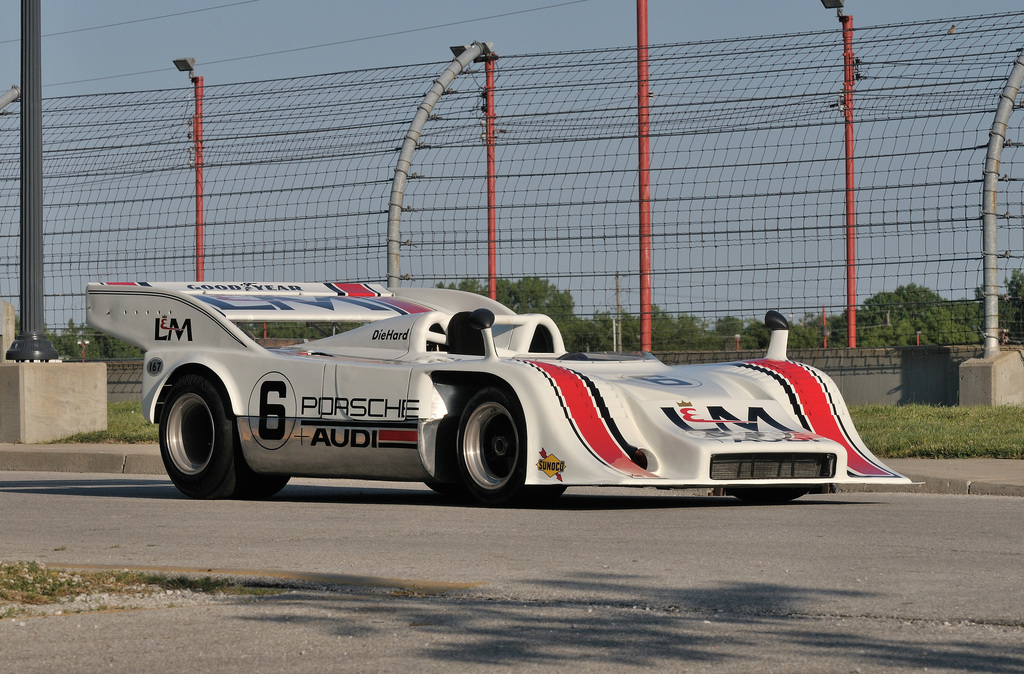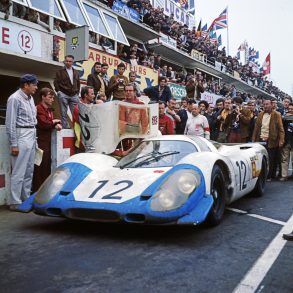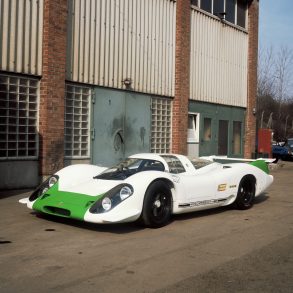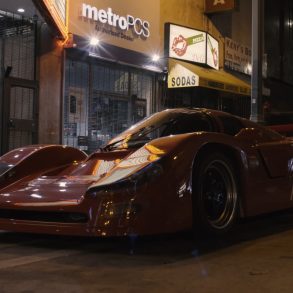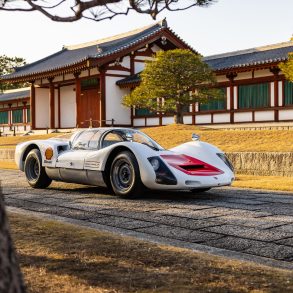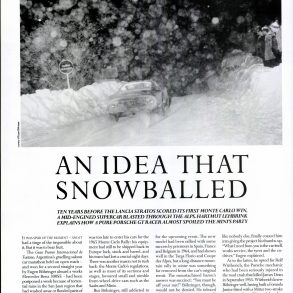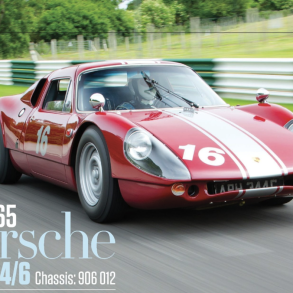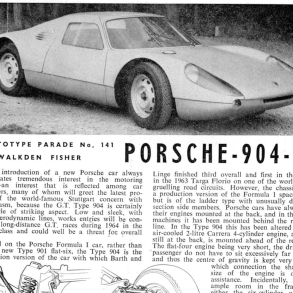Porsche 917/10 (1972)
Premiere: 1972 April 3 at Interserie Nürburgring
Summary
The 1972 917/10 was similar in its design to the 908/03, but, of course, had the 12-cylinder engine instead of the 3-litre flat-8. The 917/10-72 was first seen at the Interserie Nürburgring race on April 3. It was the chassis 004 car of Leo Kinnunen and Keimola Racing Team AAW. Kinnunen scored 4th in the first race, but would win the championship by the end of the season. The second Interserie race was at Monza on May 1st and that race was won by chassis 917/10-002 and Willy Kauhsen (at the April 3 race his car still had the 1971 bodywork). With normally aspirated engines only these two 917/10 with the 1972 bodywork were entered in the 1972 Interserie. In addition two were entered in Can-Am, chassis 006 and 007.
During the 1972 season, the 917/10 Turbo was introduced. In addition, all previously normally aspirated 917/10 (chassis 002, 004, 006, 007) were equipped with turbo engines. The 917/10 Turbo sported the new showel-like front spoiler and the huge rear spoiler. The non-original Turbos could be seen in different levels of conversion, either with only the engine, the engine and the Turbo rear spoiler or as full 917/10 Turbo conversions.
The Full Story
After Porsche had won Le Mans twice with the iconic 917 Kurzheck, the engineers at Weissach converted it into a Group 7 contender that had over 1000 bhp by 1973. As a result the L&M Porsche+Audi 917/10 of George Follmer and Penske won the 1972 Can-Am Championship ahead of the typically dominant McLaren team.
The 917/10’s purpose was to promote the new Porsche+Audi dealerships in North America by winning races. In 1969, Porsche raced two of the 917PAs with little success that eventually led to the purpose-built 917/10 and 917/30 turbocharged versions.
The capable team at Weissach under the direction of Hans Mezger and Helmut Flegl created the 917/10 specifically for the 1971 Can-Am season. It was much wider and fitted with massive integrated rear wing that was suitable for the sprint track races in Can-Am. It was also the shortest 917 ever built. Mark Donohue described the 1972 configuration as having “the meanest, wildest, ugliest race car nose in the entire world.”1
Porsche began turbocharging their 12-cylinder engines as early as 1970 to deal with the great power being produced by the enormous American V8s in the McLarens. Engineer Valentin Schäffer was responsible for fitting the two Eberspächer Turbos with a simple intake-to-exhaust wastegate system.1
First tests with 917/10-001 as driven by Jo Siffert were fleeting with a lack of instant throttle response. He later personally fielded the second 917/10 with STP sponsorship in the 1971 Can-Am season with a few podium finishes.
For 1972, Porsche decided to team up with Penske and Mark Donohue who had prepared one of the best Ferrari 512s in 1971. Porsche also withdrew their factory team in the World Sportscar Championship to focus solely on Can-Am. Their move was highly successful by eventually winning the 1972 championship outright.
With L&M Cigarettes livery, the Penske Porsches were developed by Porsche and Mark Donohue working in concert. The heavily revised intake, new titanium valves and increased cooling allowed the engineers to produce a reliable 18~20 psi and 800 bhp for Penske. Furthermore, a recalibrated Bosch fuel injection unit and intake manifold relief valves improved the poor throttle response from 1971.
To manage the typical 900 bhp that the Penske Porsche put down, Porsche revised the gearbox within the same magnesium housings. Furthermore, at Mark Donohue’s request, the reverse gear was omitted and the rear differential was locked at 100%.1
During the 1972 season, the Penske Porsches suffered from occasional technical issues that only prevented them from winning every single race. Mid-season Mark Donohue suffered a bad accident in a lightweight magnesium car during tesing and was sidelined. He was replaced by George Follmer who later won five races and the championship.
Follmer says the car “will always be special for me. I got very familiar with it. I could do almost anything I wanted with it. I could make it go as fast as it could go… The ’72 season was kind of memorable because I won the Trans-Am series too.”2
During the same year, Leo Kinnunen was dominating the Interserie in Europe with his 917/10 that was turbocharged mid-season for the Finnish AAW Racing Team.
For 1973, Valentin Schäffer had completed the 5.4-liter engine which produced considerably more power at 1100 bhp at 7800 rpm. The entire 917/10 outfit from Penske was sold to Rinzler Motorracing Royal Crown who won the first two races of the season. Later the new Porsche 917/30 of Mark Donohue from Penke steamrolled the rest of the season for the overall championship.
